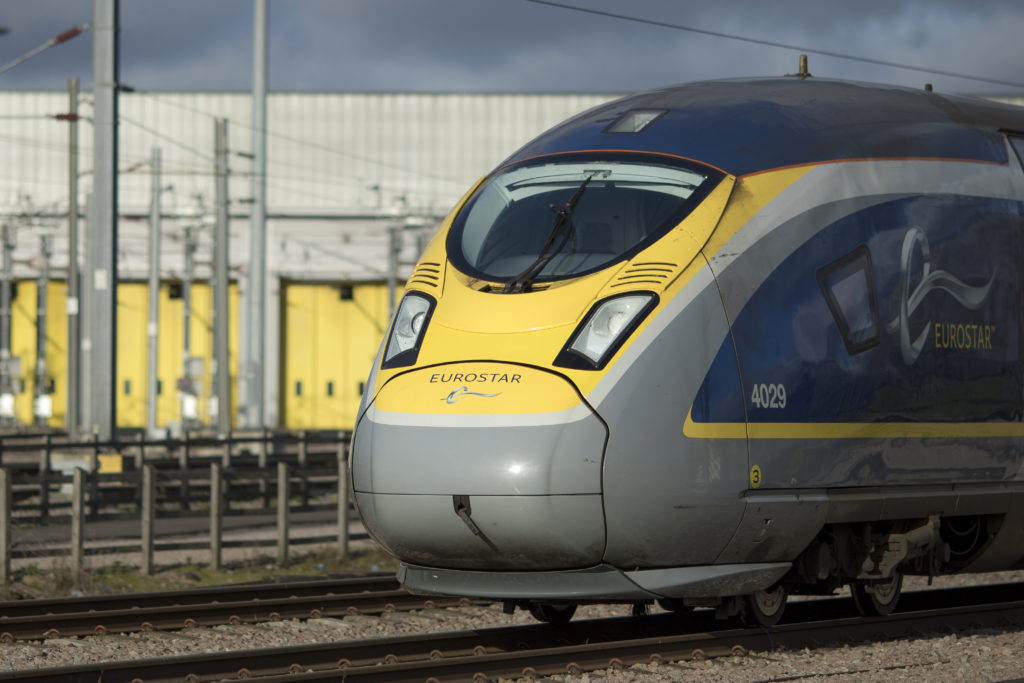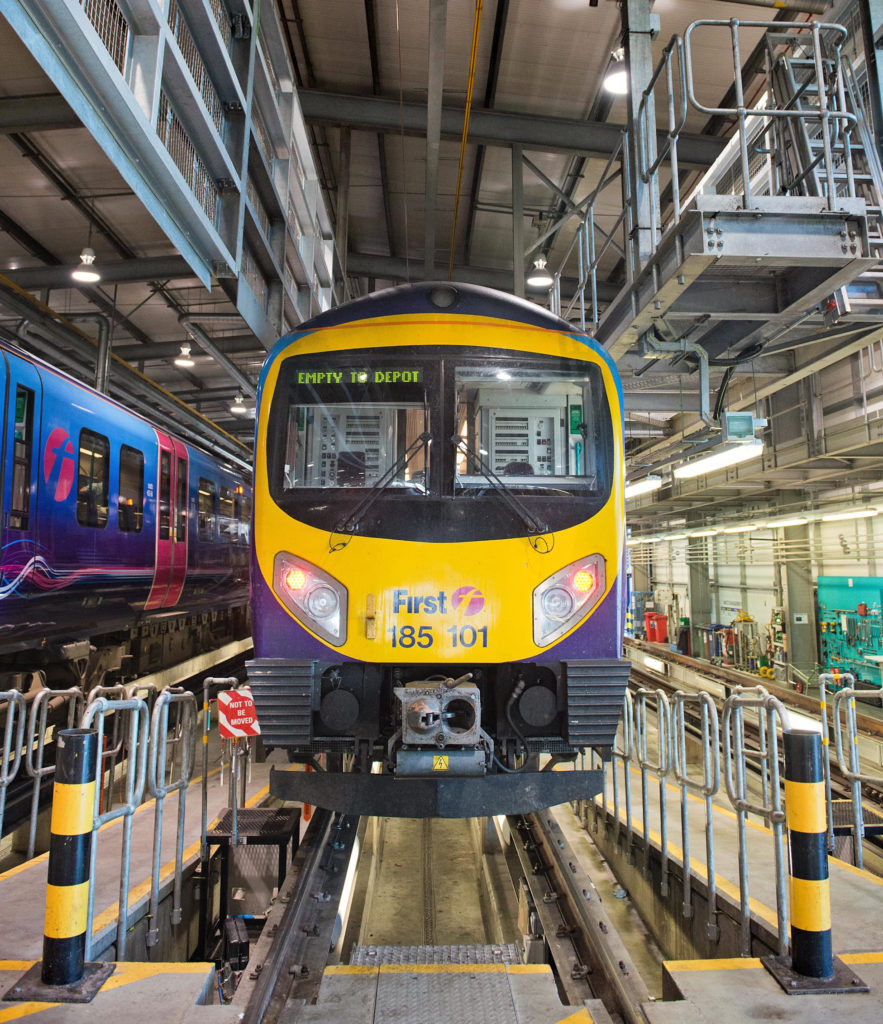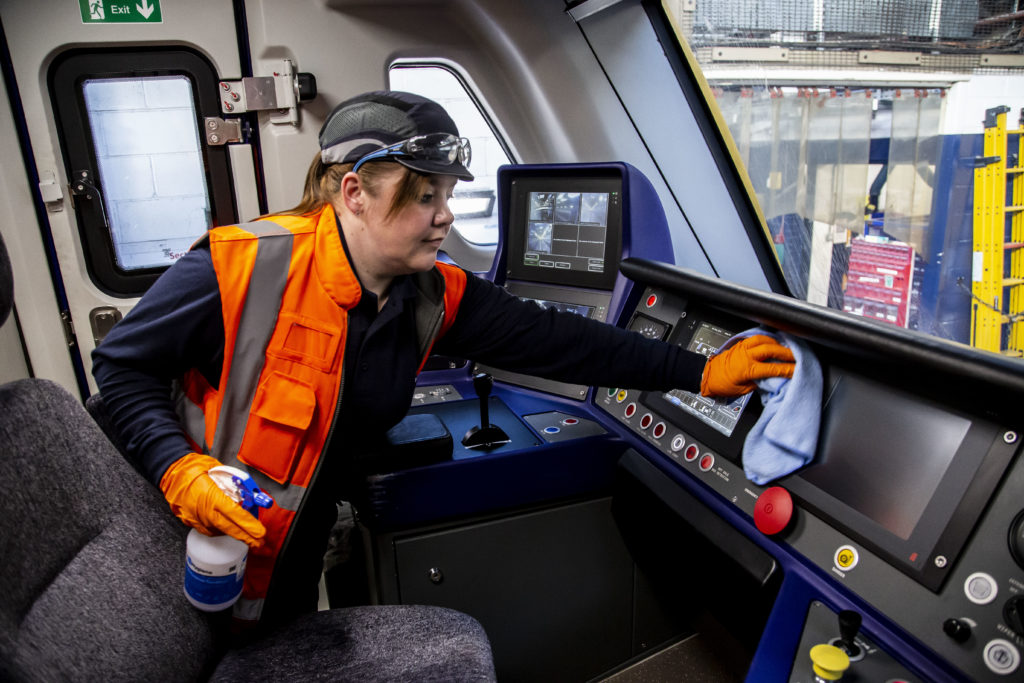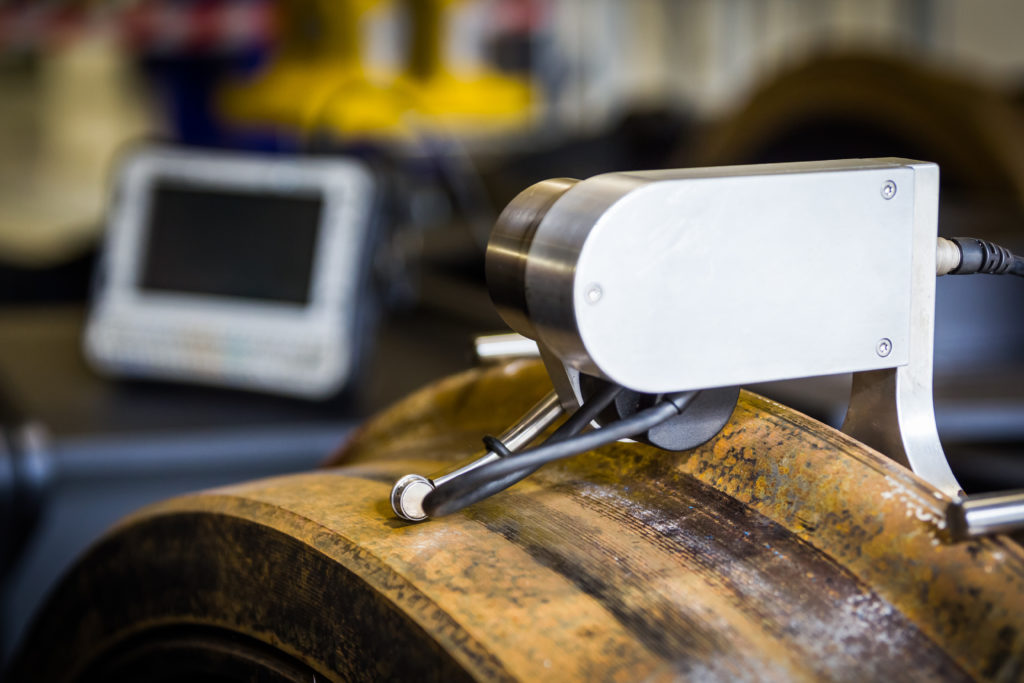With rail franchising effectively abandoned and management contracts established, alongside the introduction of new fleets into existing depots, there is increased focus on improving depots on relatively slim budgets. As many new vehicles are of similar technological standards, much knowledge will be transferrable. But some of these vehicles are arriving at depots built for slam-door stock and there is also the need to improve maintenance arrangements for existing fleets. There are many challenges.
Against this background, the Railway Division of the Institution of Mechanical Engineers arranged a seminar in June 2021 entitled ‘Evolution and Revolution: Railway Depots Today’, showing how they were being adapted. Rail Engineer was pleased to attend.


International difficulties
There were eight key topics on the agenda, including the changes needed to processes to adapt to the Entity in Charge of Maintenance (ECM) legislation, influencing depot upgrades and automation, all closely allied to smart rolling stock maintenance. The reality of the challenges was shown in locational studies, in many cases illustrating the extra challenge of building a new depot on an old site. One presentation tackled the task of decommissioning and the transfer of rolling stock maintenance to other organisations.
Persons or organisations responsible for the maintenance of vehicles used on the main line railway are known as Entities in Charge of Maintenance and their vehicles are required to have an ECM assigned to them in the National Vehicle Register (NVR). In the case of Eurostar, with its international duties, the requirements are broader.
Dan Barrett, Head of Engineering at Eurostar, introduced the requirement to adapt processes for the maintenance of the company’s fleet to meet the legislation. The stock had been maintained since 1994 and the work transferred to a new site at Stratford in 2007, with some also being undertaken in Brussels and Paris. The conference heard of the arrangements for both the older stock and later E320 vehicles, with the multi-country use of the Eurostar trains meaning the legislation became a challenge to meet.
Delegates were told how the company had tackled the need to adjust processes to meet the regulations, keeping the units out of the depots and earning income. The intention was to rationalise maintenance on the newer units and bring remote condition monitoring into force, relying significantly in receiving data direct from the trains themselves.

Good practice
In contrast, the agenda then moved on to a national view from Mark Molyneux, the workstream lead for main line depot-related aspects of the Rail Delivery Group-sponsored Industry Network Reliability Action Plan. The strategy focuses on examining depot safety and performance.
The establishment of a depot working group – on which all Train Operating Companies (TOC) had been represented – led to a good practice guide for depots. For some time, it had been apparent that depots could tend to be an afterthought following a decision to procure new trains. This potential shortcoming required attention as a priority.


The operational function of a depot is important, both for safety and performance; a full depot was of little help if trains could not be moved around. Performance was viewed as sufficiently important to formally establish the ‘701A Owners Group’. From this came the ‘Fleet Management Good Practice Guide’. This 20-point plan is the current industry view of the activities required to maximise the reliability of the national rolling stock fleet. Its aim is to allow TOC engineering teams, engineering directors, fleet managers and other rail partners to identify issues to concentrate on and where to view best practice.
The pit-stop approach
The conference moved on to a presentation by Sam Travis-Lunt, Systems Improvement Engineer for Alstom. In 1999, Virgin Trains awarded Alstom a contract to design, build and maintain the new fleet of high-speed tilting Pendolinos for the West Coast Main Line until at least 2026. Within the full maintenance contract of the 56 Class 390 trains, Alstom strives to optimise costs while improving fleet performance.
In 2006, the company implemented ‘Train Tracer’ to remotely monitor the fleet’s condition in real-time and to anticipate the needs for corrective maintenance – the pit-stop approach. Eight years later it commissioned the first TrainScanner as a data capture solution, enabling predictive maintenance for wheels, brake pads and pantograph carbon strips. This diagnostics portal automatically measures the wear of these key consumables when the trains arrive at the depot. It also checks the integrity of the underframe and side skirts.
Additionally, in 2016, a new Health Hub release was commissioned utilising Alstom’s rule engine. This is a web-based supervision tool providing a deeper insight into fleet usage and its availability. It triggers alerts and maintenance recommendations automatically, based on pre-defined rules set by the user. Alstom also launched a second TrainScanner device that was installed at Oxley Depot near Wolverhampton, following successful testing of the predictive maintenance prototype.
Adapting Ardwick
The conference then took a dip into history with Lyndon Platt, Fleet Technical Manager for Siemens Mobility UK. The theme was Ardwick Train Maintenance Depot – continuing to evolve to meet changing demands.
There has been significant rail infrastructure on the site for many years but, in 2006, the current facility came into use. The depot is on land leased from Network Rail until 2035, built, owned and maintained by Siemens. The location is a primary depot for 51 three-car Class 185 DMUs, with a secondary depot in York and a facility at Cleethorpes.
The contractual target with TransPennine Express is to deliver 46 Class 185s Monday-Friday and 44 at weekends. Ardwick delivers 16 or 17 of these units, providing light and heavy maintenance, repairs, modifications and cleaning to the fleet. The depot also delivers five Class 323 units per day for Northern.
Lyndon presented a fascinating description of how the depot was overlaid on the old freight depot sidings and showed how such a development could be staged. The site was adapted to deal with longer trains than originally envisaged whilst maintaining an effective flow of units through the depot. The changes carried on with electrification in 2013/14 and the addition of extra stabling sidings. The scope of the installation is reinforced with the provision of a bogie drop and wheel lathe; overall a highly optimised maintenance site.
Lyndon summarised by telling the audience that, from experience at Ardwick, one of their key challenges had been the discovery of unexpected ground conditions due to the site’s historic use, where new sidings or structures need to be erected.
Developing the business case under the current franchise and contractual climate presented extra challenges, such as changes to the depot for maintenance or technology improvements. When the facility was electrified in 2014, many adaptations had to be made – each presenting varying degrees of technical difficulty – such as changes to walkway gantries given the different kinematic envelope of the Class 350/4.
Managing transition
The conference then took another direction with a presentation from David Pearce, the Class 345 Delivery Manager for the MTR Elizabeth Line. His task was the managed closure of the existing Old Oak Common Depot to make way for major future rail developments.

David’s role encompasses depots, being one of the key facilities used to provide a safe, reliable, clean fleet. However, in terms of the initial work, the task involved the depot’s closure, disposal of Class 332 and 360/2 fleets, and the seamless transition of the Class 387 fleet into service, all with no impact to the customer.
David was immediately met with a list of significant challenges. The work was fraught with changing and tightening timescales, the threat of skills loss, long material lead times and obsolescence. He was also faced with political pressure, defects and the risks associated with new fleet introduction. It was no mean challenge and a pragmatic approach was needed.
The greatest tests were probably to maintain an open and transparent relationship between parties, communication with the ‘doers’ and, overall, ‘expect the unexpected’. As well as the pressures involved in running the depot down while providing a service, there was disposal of the existing fleets of rolling stock. David’s important conclusion was to remember your end customer, align your strategies and communicate.
Dealing with constraints

Mark Wild, Chief Executive Officer at Crossrail Ltd, reviewed the depot works at Old Oak Common from the closure of the original facility in 2009 to the present. The history of the site development proved a fascinating insight into the new railway, with the depot site starting off as a tunnel ring store and morphing into the large-scale establishment seen now.
The background to the design gave a particularly intriguing insight into the process of depot planning, not always being able to achieve the optimum. A significant point was that the depot was single-ended due to constraints, rather than the double-ended layout which system analysis would suggest was the ideal solution. However, with nine maintenance roads and 33 storage roads, the resources are available.
The depot is signalled to achieve maximum efficiency and safety around depot movements. Additionally, the Automatic Vehicle Inspection System allows assessment of such issues as wheel profiles, brake disc and pad wear and, as a result, it is claimed that Class 345 EMUs have the lowest maintenance interval of any unit in the UK.
Improving performance
Sarah Rolando, senior consultant from Amey, demonstrated train movement data analysis undertaken at Leeds’ Neville Hill Depot. This large facility deals with both InterCity and local rolling stock, yet sits on the crowded Leeds-Micklefield corridor with all its capacity restrictions. It is also constrained by having one way in and one way out.
The remit had been to investigate poor performance through the use of granular train movement data and collaborate in a cross-functional working group to enact performance initiatives.
Sarah commented that her team had encountered two key challenges in the past year. Firstly, there seemed to be a disconnect between on-network and off-network performance, making it difficult to implement and share best practices. Secondly, the data that follows units inside depots was compromised by GPS not being centrally available, thus creating a real challenge when investigating operational requirements here.


Departure performance was seen to be poor and the need for improvement was overwhelming. Sarah described the root cause analysis undertaken using Trust and general movement analysis involving a whole system approach. Valuable insight into the depot performance was gained and allowed all concerned with stock movements to take ownership of performance, with significant potential gains.
Synchronised lifts
Underground/metro systems were the order of the day in a presentation led by Anne Potter, Programme Delivery Manager 4LM Depots, Transport for London, assisted by Chris Antram and Robert Parry. The team was undertaking preparations for the Piccadilly Line upgrade, depots and stabling facilities, and faced the challenge of enhancing these establishments while the running and maintenance of the existing service continued, keeping the wheels of the 1973 stock turning.
The new fleet would consist of longer trains whilst the existing depots were relatively primitive, with outdated layouts and surrounded by urban sprawl which prevented any expansion of the depot footprint. A major change to processes arises from the articulation of the new stock and the need to undertake synchronised lifts, a step change from the current arrangements. The only option was to phase depot construction, but the best available process analysis and modelling techniques were being applied to allow optimum design.


Getting smarter
As a final module, ‘Smart Rolling Stock Maintenance – Depots of the Future’, Gareth Tucker and Adam Bevan from the University of Huddersfield looked at proposals on how robotics and automation can be applied to rolling stock maintenance.
Further work on optimising depot workflows and scheduling is vital. The approach would be supported and strengthened by extracting useful information from reliability-centred maintenance to the advances that were proposed. A view across the industry suggested that maintenance accounted for 40% of lifecycle costs and that 96 depots were responsible for 14,000 vehicles in the UK. Within this domain, the use of smart technologies may be a key enabler in improving the efficiency of train maintenance.
The Huddersfield research provided a useful round-up of many points that had been presented during the conference, including the introduction and development of enhanced automated non-destructive testing techniques, including depot-based systems which automatically inspect key components as the vehicle is moving – wheel profile wear, brake wear, image profiling and pattern recognition, scanning of wheel damage to replace visual inspection and the use of robotics to inspect critical or obscure components/parts.
A fitting conclusion to the wide-ranging conference was illustrated by the scope of the Huddersfield facilities. These comprised a £1.8 million project to establish a ‘smart rolling stock maintenance research facility’, due for completion in June 2023.
The aim of this facility is clear and vital: to improve the efficiency and effectiveness of rolling stock maintenance to meet the challenges of the near future of rail, enabled by a virtual depot/digital twin arrangement, RCM data processing and development, and an augmented reality suite.
There was much to be gained from the seminar and Rail Engineer has only been able to summarise the mass of useful data and information. A seminar can act as a real catalyst for improvement and there is no doubt the industry will benefit greatly from the exchange of ideas and design. The IMechE is to be congratulated on this move to deal with that 40% of the rolling stock cost allied to maintenance and will surely encourage further progress.

